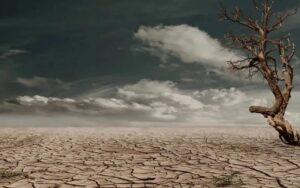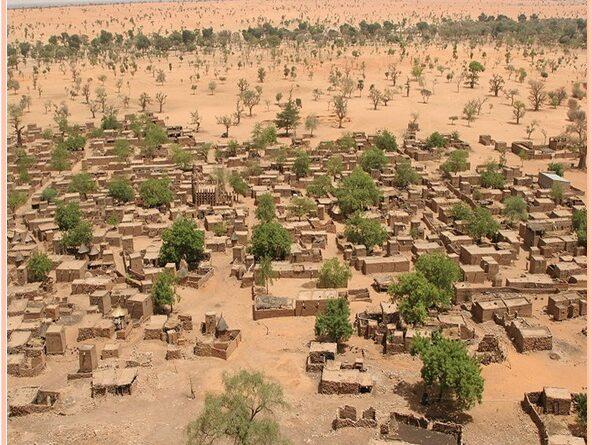How to control Desertification? Problem and Solution
What is desertification
Desertification is the degradation process by which a fertile land changes itself into arid, semi-arid, and sub-humid lands by losing its flora and fauna. This can be caused by drought, deforestation, climate change, human activities, or improper agricultural land. This activity contributes to soil erosion and an inability for the land to retain water or regrow plants. About 2 billion people live on the drylands and account for more than 40 percent of the world’s terrestrial surface area. some other processes of Land degradation are urbanization, mining, farming, and ranching. In the course of these activities, trees and other vegetation are cleared away, animal hooves pound the dirt, and crops deplete nutrients in the soil. Climate change also plays a significant role, increasing the risk of drought.

Causes of desertification
The main causes of land degradation vary with different locations and cause often overlap with each other. In the regions of Uzbekistan and Kazakhstan surrounding the Aral Sea, excessive use of water for agriculture has been a primary causing the sea to shrink, leaving behind a saline desert. In Africa’s Sahara region, population growth has caused an increase in wood harvesting, illegal farming, and land-clearing for housing, the main reason for decertification. When the land becomes desert, Food often doesn’t grow, water can’t be collected, and habitats shift. This often produces several human health problems that range from malnutrition, respiratory disease caused by dusty air, and other diseases due to lack of clean water.
Human activities that contribute to desertification include the expansion and intensive use of agricultural lands, poor irrigation practices, deforestation, and overgrazing. This unsustainable land uses place enormous pressure on the land by altering its soil chemistry and hydrology.
Unique weight loss medicine-click here
Causes of Desertification include-
- Overgrazing.
Deforestation.
Farming Practices.
Urbanization and other types of land development.
Climate Change.
Stripping the land of resources.
Natural Disasters.
Effect of Desertification
The desertification problem is widespread in more than 100 countries. According to the European Commission’s World Atlas of Desertification, More than 75 percent of Earth’s land area is already degraded, and more than 90 percent could become degraded by 2050. overexploited drylands suffer from erosion, soil salinization, loss of productivity, and decreased resilience to climatic variations. Global warming due to the atmospheric carbon dioxide and other gases emitted by fossil fuel combustion may complicate this problem in the future. A rise in global temperatures is likely to accelerate the process of desertification as evaporation rates increase.
Also read- Human Activity and Waterlogging Problem and solution
The actual process of desertification is poorly understood. it is difficult to pinpoint if drought, is driven by temporary changes in atmospheric patterns or a long-term, permanent condition. Some meteorologists and soil scientists measure the impacts and length of drought to determine if it is an example of desertification. Droughts can persist for months or years, but eventually subside; lands undergoing desertification never recover past productivity. For example, In the United States, 65 percent of the country was affected by drought in the 1930s, but the Great Basin eventually recovered, and now drought usually affects no more than 10 percent of the land.
Effects of Desertification includes-
- Farming becomes difficult or even impossible in the area.
Flooding chances are more.
Hunger – because of no farming.
Poor quality of water.
Overpopulation and.
Poverty.
Desertification solutions
United Nations established the Convention to Combat Desertification (UNCCD) in 1994. Its 122 member countries have committed to Land Degradation Neutrality targets. Likewise, countries associated with Paris Agreement have agreed to targets for reducing carbon pollution. These agreements involve working with farmers to safeguard arable land, repairing degraded land, and managing water supplies more effectively.
The UNCCD has also promoted some organizations that effort to restore 100 million hectares of land across 20 countries in Africa by 2030. A similar effort is underway in northern China, with the government planting trees along the border of the Gobi desert to prevent it from expanding as farming, livestock grazing, and urbanization. Apart from this to reduce desertification Focusing on Water management and Rainwater harvest must be done.
- Some other solutions are-
Reforestation and tree regeneration.
Buttressing the soil through the use of sand fences, shelterbelts, woodlots, and windbreaks.
Better and hyper-fertilization of soil through planting.
The residue from pruned trees can be used to provide mulching for fields thus increasing soil water. retention and reducing evaporation.
Desertification in India
Population growth, wood harvesting, overgrazing, soil erosions, are the important factors that have caused desertification in India. According to the Government’s data recently presented to the United Nations Convention to Combat Desertification (UNCCD), India lost 31%, or 5.65 million hectares, of grassland area in the last 10 years. Data says that over 105 million hectares or about 32% of India’s areas have degraded. Nearly 26 states in India witnessed an increase in the level of desertification in India.
Unique weight loss medicine-click here
Solution of desertification in India
In India, Multiple steps and measures have been taken by the concerned authorities to reduce desertification. A Command Area Development Programme was launched in 1974 which is coordinated by the Ministry of Water Resources for its implementation in various states of the country. It aims is water management in agriculture area. The Desert Development Programme was launched in 1995 to minimize the effects of drought in areas across the country, under the Ministry of Rural Development.
Some other solutions have taken by India are-
- India became a signatory to the United Nations Convention to Combat Desertification (UNCCD) in 1994.
- National Afforestation Programme was implemented by the Ministry of Environment, Forest, and Climate Change in the year 2000.
In 2001, the National Action Programme to Combat Desertification was implemented by the Ministry of Environment, Forest, and Climate Change.
Desertification and Land Degradation Atlas of India were released by ISRO in 2016to combat desertification and land degradation.




Pingback: The Pacific Ring of Fire and Its great Importance - Geotourism